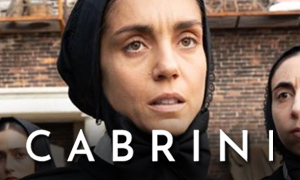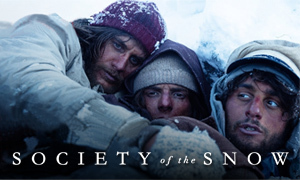Trees of Peace: History vs. Hollywood
Is Trees of Peace based on a true story?
Not exactly. According to writer and director Alanna Brown, her Netflix movie was inspired by various stories of women in hiding in 1994 during the Rwandan genocide. Brown said that the idea for the movie came to her in 2008 or so while she was conducting research for an interview with Francine Lefrak, the founder of Same Sky, a trade-not-aid organization dedicated to helping rehabilitate women survivors in both Rwanda and other international locations.
"In prepping to interview her, I started coming across real survival stories of women and just people in general," Brown said, "and was so gripped by the will to survive such a harrowing ordeal, without food, without water, sometimes without shelter, hiding in the most extreme circumstances you could possibly imagine and hanging on to life." While a number of real survival stories inspired her, which contribute to the film's assertion that it was "inspired by true events," the story told in the movie is fictional and not directly based on any single real-life account. -Peoria Film Fest Interview
"I decided to [set] the story in one spot because I had read other stories of women who were hiding in one place, and it was very compelling to me," says Brown, "I was drawn to the challenge of sort of having to think outside the box while setting a story literally in a box." Alanna Brown said that she also decided to confine the story to a single room because she was shooting on such a low budget. -SBIFF Interview
Just one of the similar real-life stories to the one Brown created for the movie is that of Immaculée Ilibagiza, a Rwandan woman who spent 91 days in hiding with seven other women in the cramped bathroom of a local pastor. Ilibagiza's family was brutally murdered during the genocide. She wrote the book Left to Tell: Discovering God Amidst the Rwandan Holocaust, which documents her true story of survival.
Director Alanna Brown said that what also inspired her is that since the genocide ended and they rebuilt the country, Rwanda has the highest percentage of women in government of any country in the world, going from 18% participation before the genocide to 56% in 2008.
Are the four women in Trees of Peace based on real people?
No. While writer and director Alanna Brown says that she was inspired by real-life accounts of women in hiding, the four women in the movie, two Tutsis, a Hutu, and an American volunteer, are fictional characters created to represent the varying backgrounds of some of the women who were affected by the 1994 genocide in Rwanda.
"The script was written to reflect the true events of the Rwandan genocide—and to reflect the collective spirit within all of us," Brown stated on her Kickstarter page for the film. "Whether we've seen death or not, live in Rwanda or otherwise, many of the hopes, fears, losses, and triumphs in this story are universal. Annick, Mutesi, Jeanette, and Peyton—with all their vices and virtues—will shine as real women, and as warriors." In the movie, the women are at first at odds with one another but gradually form a sisterhood during their 81 days in hiding.
How many people died in the Rwandan genocide?
In researching the question, "Is Trees of Peace a true story?" we confirmed that as many as 800,000 people were murdered during the Rwandan genocide, which was started by Hutu nationalists and carried out mainly against their ethnic counterparts, the Tutsi. The genocide spanned approximately 100 days from April 7, 1994 to July 15, 1994. It ended when the Tutsi-led Rwandese Patriotic Front gained control of the country via a military offensive. The four women in the Netflix Rwandan genocide movie remain in hiding for 81 days during the bloodshed.
Where can I buy the children's book featured in Trees of Peace?
In the Trees of Peace Netflix movie, the four women find inspiration while they are in hiding by reading from a children's poem book titled Seeds of Love, Trees of Peace. The book was written exclusively for the movie and is not available to the public. The only way to previously obtain a copy was to make a higher-tiered pledge to the movie's Kickstarter campaign. It's worth noting that if you look on Amazon, this is not the same book as Wangari's Trees of Peace by Jeanette Winter about the Kenyan environmentalist and political activist Wangari Maathai.
Was Trees of Peace funded in part by a Kickstarter campaign?
In addition to eventually finding producers to back the film, director Alanna Brown ran her own Kickstarter campaign and managed it herself. She acquired 372 backers who pledged a total of $65,752. The total budget ended up being around $800,000.
Where was Trees of Peace shot?
Director Alanna Brown shot the movie in 20 days in Los Angeles. The Rwandan genocide movie was shot chronologically in part so that the graffiti on the walls of the small storage room that hid the women could grow realistically during the filming. It also allowed for the characters to lose weight as the shooting progressed, reflecting their lack of food during their 81-day confinement.
What does the title "Trees of Peace" mean?
While attempting to unearth the Trees of Peace true story, we learned that the origin of the title comes from the command, "Cut the tall trees," which was broadcast over the radio in Rwanda in 1994 to signal the start of the war/genocide. The "tall trees" were the Tutsi, who were ethnically taller and had lighter skin than the Hutu, the ethnic majority. The radio broadcast literally meant that it was time to kill the Tutsi. In the movie's title, the four characters are the "trees," two of whom are Tutsi. Their strength and the sisterhood that they form is representative of what helped many of the women survive and the country heal.
Did writer/director Alanna Brown visit Rwanda prior to making Trees of Peace?
Yes. Alanna Brown visited Rwanda in 2019 before shooting the film to talk to locals and to make contacts in the Rwandan film community. Through those contacts, she was able to cast Rwandan actor Eliane Umuhire who plays Annick. Brown's goal was to create a story that reflected the strength and resilience of the women survivors in Rwanda. While Trees of Peace is not directly based on a specific true story, it draws from similar accounts to create a narrative that is representative of those shared real-life experiences.
Brown also visited a female survivor of the Rwandan genocide who lived outside of Los Angeles at the time. "She welcomed me to her home and I went and visited her, and she told me her story and I met her children and I met her mother. She read the script and she loved it," says Brown. "She thought it was a beautiful story. So having her sort of blessing was what I needed to feel like I could keep going forward with this." -Holly Hargreaves Interview







